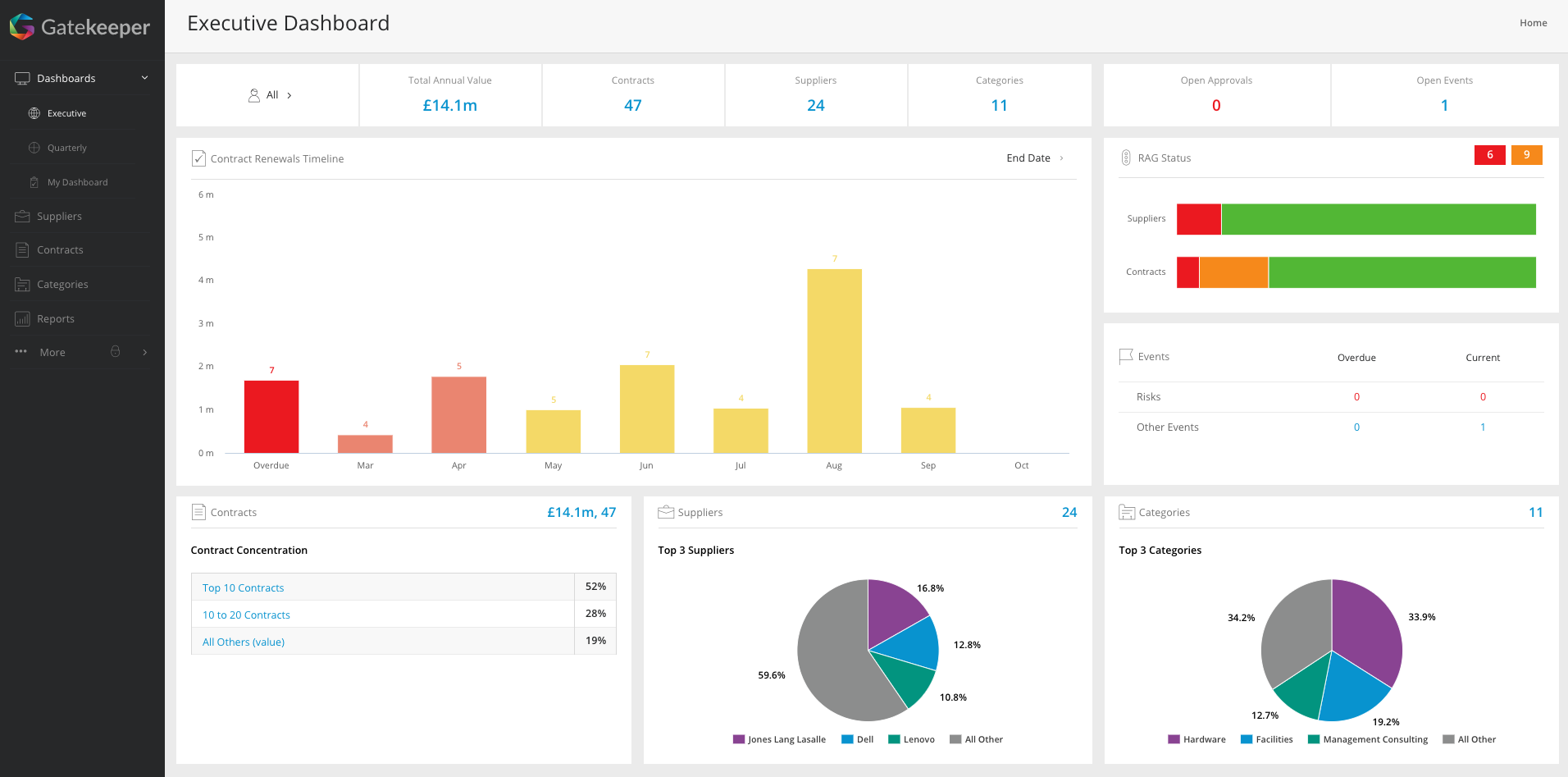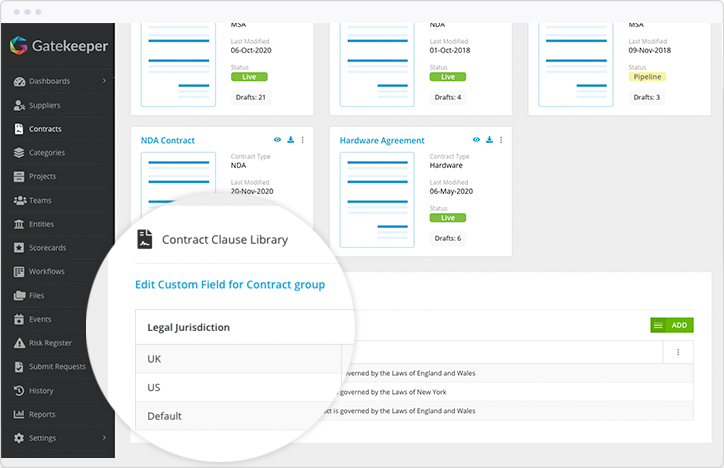The success of a business is inextricably linked to the success of its contract outcomes. If obligations aren’t fulfilled, or the performance of a contract has been poor, a business can be at risk of operational disruption, reputational damages and even regulatory consequences.
The nature of contracts means that they shouldn’t automatically be considered as just set-up-and-go. Instead, they need careful management at every stage of the lifecycle and oversight from a team or manager who can drive the best possible outcomes of each agreement.
Driving accountability can be difficult if the approach to contract management is fragmented, if teams don’t understand their responsibility or if an individual isn’t taking ownership for the agreements end-to-end. Other issues can also lead to a lack of accountability, including:
- Difficulty gaining commitments from, and staying onside with, contract stakeholders with a key part to play in certain contract management activities
- The almost always limited number of people directly responsible for contract management activities
In this article, we take a look at contract management strategies that businesses can adopt to drive accountability across teams and individuals to improve overall outcomes.
Strategy 1: Assign contract ownership
The legal right to possess something, say a house or a book, is known as ownership. In an organisation, ownership is used to describe a set of responsibilities typically assigned to a named person, a role, a function or an operating entity.
Sometimes those responsibilities might be shared, based on expertise, location, availability or other factors.
The strategy here is accountability management. Since an organisation is established for a purpose, someone, somewhere in the organisation, has to be responsible for some of the activities undertaken by the organisation with respect to contracts in order to achieve that purpose.
A key element of this strategy as applied to Contract Lifecycle Management (CLM) is making it easy to find out what contract and obligation responsibilities have been assigned to a specific individual, and which individuals have been assigned responsibility for a specific contract or some of its obligations."
This capability can minimise stress, tension and floundering about when there’s a situation with a contract or its obligations, by revealing who to turn to for advice, guidance and support.
Ownership in relation to contracts applies at two levels: to the contract itself, and to each actionable obligation described within the contract or applicable by virtue of any regulatory regimes the organisation or the contract is subject to.
1. The contract
Things can and do go wrong or need attention in a contract. An order may not get delivered correctly. Prices might need updating. The annual usage report needs to be sent to the supplier before a certain date.
Every operational contract, whether important enough to be actively managed or not, needs an owner assigned to deal with the sort of activities mentioned above.
Even if that owner is a construct like a role or business function, ultimately somebody in that role or business function will be personally responsible for representing the organisation to the relevant supplier or contracted third party and acting as a point of contact for the contract within the organisation.
2. The contract obligations
Responsibility for compliance with contractual or regulatory obligations can be assigned to one or more parties to the contract. However, pure self-interest dictates that it would be wise for the organisation to take responsibility for proactively checking that the other parties are indeed complying with their assigned obligations.
This action is based on the doctrine of “no surprises”, which essentially means not hearing bad news, say about a contracted supplier, from the media. Being proactive about checking for compliance gives the organisation the opportunity to take remedial action while it’s still possible.
Concerning compliance with its own obligations and the monitoring of the compliance efforts of the other contracted party(s), responsibility for each obligation might be spread across a number of individuals who will officially own those assigned obligations.
Strategy 2: Create a contracts Events Calendar
Calendar management is a critical CLM activity and is another task that your team or assigned individuals need to be held accountable for. There can be hundreds to thousands of contracts under active management, with many times more contracts likely to need just the occasional check.
This strategy is about being prepared. Key to this is diarising details of all date-driven events and activities related to contracts and CLM processes, proactively alerting the necessary people about their imminent approach, and recording details of their changing status.
Depending on its purpose, subject matter and duration, there can be large numbers of date-driven activities explicitly specified in a contract.
These activities can include:
- Providing notice to a supplier about the organisation’s intention to renew or terminate a contract by a certain date in order to prevent any automatic termination or renewal occurring
- Reviewing both the organisation’s and the supplier’s compliance with contract obligations
- Obtaining advice from a supplier about proposed new pricing to determine its acceptability.
This is where the right CLM technology can add significant value, not only when it comes to notifying the correct stakeholders in a timely manner about the actions they’re required to take, but also identifying what those actions are automatically in the first place.
Through a combination of data extraction and automated workflows, a CLM solution like Gatekeeper can dramatically reduce the administrative overhead associated with managing contract events.
 See all of your contracts in one place with the Gatekeeper Dashboard
See all of your contracts in one place with the Gatekeeper Dashboard
Contracts can be subject to various regulatory regimes that may or may not be specifically stated, where compliance with obligations is required by dates specified only in the relevant legislation or regulations.
To complicate matters, there may be an unstated but obvious need for some preliminary, simultaneous or follow-up activities to be performed in relation to some of those specified or unspecified date-driven activities, like:
- Determining if a contract approaching its expiry date should be renewed or not
- Obtaining employee growth or shrinkage projections and estimating usage levels for the next measurement period
- Adjusting regulatory obligations compliance checks to deal with planned updates to the legislation.
Finally, there can be any number of different CLM activities that need to occur periodically in relation to various contracts at various points in their lifecycle. These activities might cover:
- Reviewing the ongoing relevance of contract management plans and adjusting as necessary
- Checking the supplier’s service delivery performance against agreed standards
- Adjusting CLM processes to meet changing needs or to incorporate new technologies.
There may be target dates established for such activities, but they are likely to be the first to be flexed in favour of dealing with activities with immovable dates.
On the whole, there can be an awful lot of CLM activities that need to be discovered or invented, registered, tracked and reported on. Automation is really the only viable solution given the numbers, especially when it comes to alerting contract owners and the CLM team about impending activities and events.
Strategy 3: Use templates and clause libraries to act ahead of time
Whoever is assigned contract ownership within the first strategy will be responsible for the contract end-to-end. This means prioritising great contract outcomes during initiation and before a potential renewal.
All great Contract Managers (or equivalent leaders) must have general market awareness to ensure they are getting the best possible terms.
Negotiations can be time-consuming and are rarely accomplished in a single conversation. This can often lead to negotiations being left on the back-burner or not being explored enough - meaning businesses fail to get the best outcomes and can even be left financially disadvantaged.
These issues can be resolved by equipping your teams with time-saving tools, both for themselves and for the negotiation process itself.
The strategy here is about being better prepared for any contract negotiations. Establishing preferences upfront for clause types and settings, providing guidance for dealing with challenges to and rejection of clause positioning, and minimising the need to continually go “upstairs” for decisions, can simplify, encourage and accelerate a contract negotiation."
That’s got to be a good thing, even if it’s a silver-lining, take-it-where-you-can-get-it type of small win in its own right when nothing else goes your way.
A clause library is used to define the different types of clause that the organisation wants to use in its contracts, whether those it creates or those provided by third parties. By definition, the absence of any common clause types indicates their undesirability.
Since negotiation of any clause might occur due to the other party’s preferences, general settings for each clause type should be developed to represent the organisation’s:
- Preferred position
- Alternative position, an acceptable compromise
- Fallback position, the limit to any compromise.
The purpose of a clause library is to assist in contract negotiations, by exploiting the wiggle room between the different settings of each clause under consideration to guide the to and fro of discussions with full knowledge of the range of acceptable possibilities.
 Gatekeeper's Clause Library
Gatekeeper's Clause Library
Of course, there will be cases where even the fallback position on a clause will not be acceptable to the other party, or the presence of an undesirable clause may be demanded, but that’s a different matter. A template library is used to define the different types of clause that might be used in different types of contract.
A particular contract type might need settings for a specific clause that differ from the three general settings established in the clause library. This may be a feature of that contract type or any regulatory regime it is subject to.
In such cases, the required clause settings would be established in the template itself, to indicate overriding of the general settings.
An organisation’s commitment to the development and use of contract and template libraries can provide significant dividends:
- Capturing statistics about the relative acceptance of each clause’s three different settings can indicate where a general change might be warranted to reduce the level of resistance encountered against that clause, further reducing negotiation time.
- Integrating the clause libraries with an online negotiation tool can drastically reduce delay in negotiations by providing instant and confidential access to options available for any clause currently under discussion.
- When an organisation has the breadth of geographic footprint that spans a number of different spoken languages, clause libraries covering both the applicable legal system and business language used in each country can be set up, providing as consistent an approach as is possible
- The value of clause and template libraries can be extended by using them as training material to help new Legal and CLM team members understand the ground rules for contracting in the organisation.
CLM solutions such as Gatekeeper, offer the ability to operate a clause library seamlessly throughout the contract lifecycle, cutting negotiation time and maintaining a permanent record of all decisions made.
Wrap-up
By assigning ownership to and equipping teams or individuals with the tools they need to always stay one step ahead, your business will be in the best position to improve contract outcomes. Event calendars and best practice templates save teams from manually tracking their contracts, letting key dates pass by unnoticed or being unprepared ahead of negotiations.
Depending on your organisation’s CLM maturity, some of these contract management strategies may already be well established but could possibly benefit from a tweak here or there, others might be a bridge too far at present or just not relevant."
If your business has a designated Contract Manager who is still tracking key events through spreadsheets or who doesn’t have the tools needed to negotiate from the best position, investing in a contract management solution is the logical next step.
To discover how Gatekeeper can help you to manage contract obligations, act ahead of time, negotiate from a position of strength and improve contract outcomes, get in touch today.

.png)
.png)
.png)
-4.png)